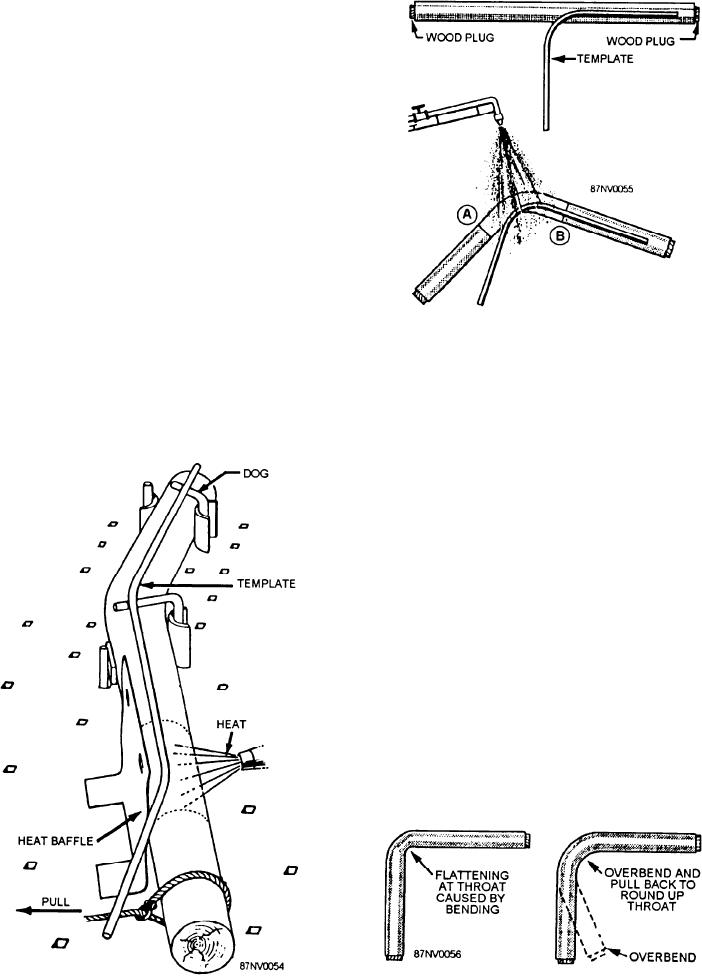
Hot Bending
For hot bends, the bending slab (fig. 16-15) will
probably serve you best. This slab requires little
maintenance beyond a light coating of machine oil to
keep rust under control. As a preliminary step in hot
bending, pack the pipe with dry sand. Drive a tapered
wooden plug into one end of the pipe (as shown in fig.
16-16). Place the pipe in a vertical position with the
plugged end down. Then fill it with dry sand, leaving
just enough space at the upper end to take a second plug.
This will help to prevent the heel or outside of the bend
from flattening. If flattening occurs, it will reduce the
cross-sectional area of the pipe, and restrict the flow of
fluid through the system. Ensure that the sand is tightly
packed. This is done by tapping the pipe continually
with a wooden or rawhide mallet during the filling
operation. A good rule of thumb is to tap 1 hour for each
Figure 16-16.--Heating and bending pipe to conform to the
wire template.
inch of pipe diameter. The second plug is identical with
the first, except that a small vent hole is drilled through
its length. This vent permits the escape of any gases
it is heated. No matter how dry the sand may appear,
(mostly steam) that may form in the packed pipe when
there is always a possibility that some moisture is
present. This moisture will form steam, which will
expand and build up pressure in the heated pipe. If you
do not provide a vent, one of the plugs will blow out
before you can get the pipe bent.
Once you have packed the pipe with sand, mark the
bend area of the pipe with chalk or soapstone. Then heat
the pipe to an even red heat along the distance indicated
from A to B in figure 16-16. Apply heat to the bend area
first on the outside of the bend and then on the inside.
When an even heat has been obtained, bend the pipe to
conform to the centerline template. The template is also
used to mark the bend area on the pipe. When bending
steel and some other piping materials, you can control
wrinkles and flat spots by first overbending the pipe
slightly, and then pulling the end back as shown in
figure 16-17.
Figure 16-15.--Bending on a slab.
Figure 16-17.--Overbending to prevent flattening of pipe.
16-15

